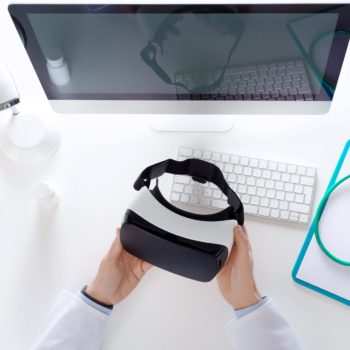Closer relation between doctor and patient thanks to technology: this is the perspective illustrated by Professor Maurizio Cecconi, head of Anesthesia and Intensive Care at Humanitas and lecturer at Humanitas University, in his speech at Wired Health 2019, the event organized by the magazine Condé Nast in Milan, of which Humanitas is a scientific partner, and focused on technology applied to the world of medicine and health.
Augmented reality and big data shorten distances
Thanks to technologies, big data and, in general, automatic learning methods that collect, analyze information and develop “predictive trends” of the patient’s state and health, the physician will increasingly have the opportunity to be in contact with the patient, rather than interfacing with machines, data and numbers. What seems to be a contradiction in terms, the greater humanization of care in the face of an increasingly significant technological presence, is actually the great challenge of innovation applied to the world of health. “Technology still obliges us to spend many hours in front of the computer, while we would like to spend them with the sick – stressed Cecconi -. The development of data science, at this time, will allow us to live in a smarter and more effective relationship with the machines, or simply to dictate to the computer and not spend hours writing”.
Hospital at home
New technologies such as augmented reality are able to bring the patient in intensive care closer to his family at home and to continue the follow-up after his resignation. “Tele-health” and video technology is not yet used much in intensive care, but different realities in the world are beginning to experience augmented reality – explained Cecconi- with software that can virtually bring back the patient, who frequently stays in hospital for many weeks, within the walls of his home or to discover the ward in which he is hospitalized, often, in fact, our patients are stuck in bed for a long time, maybe they wake up from the coma disoriented and this can clear them up and make them aware. The post-hospitalization phase is also important: for doctors it is essential to be in contact with patients released from intensive care and for this reason they are testing follow up clinics thanks to video technologies”.
The challenge: making the data speak for itself
According to a study published in the United States, intensive care will affect an increasing number of people, so much so that it can be assumed that one in three will be involved at least once in their lives. And if you consider that in these departments there are numerous monitors that record vital parameters and information about patients, the amount of data that will be available will be enormous. “For this reason, the challenge for medicine and specialists is and will increasingly be to question and interpret the data produced by the machines in the right way – concludes Cecconi -, because the future is not to turn off the brain and let the machines work in our place”.










